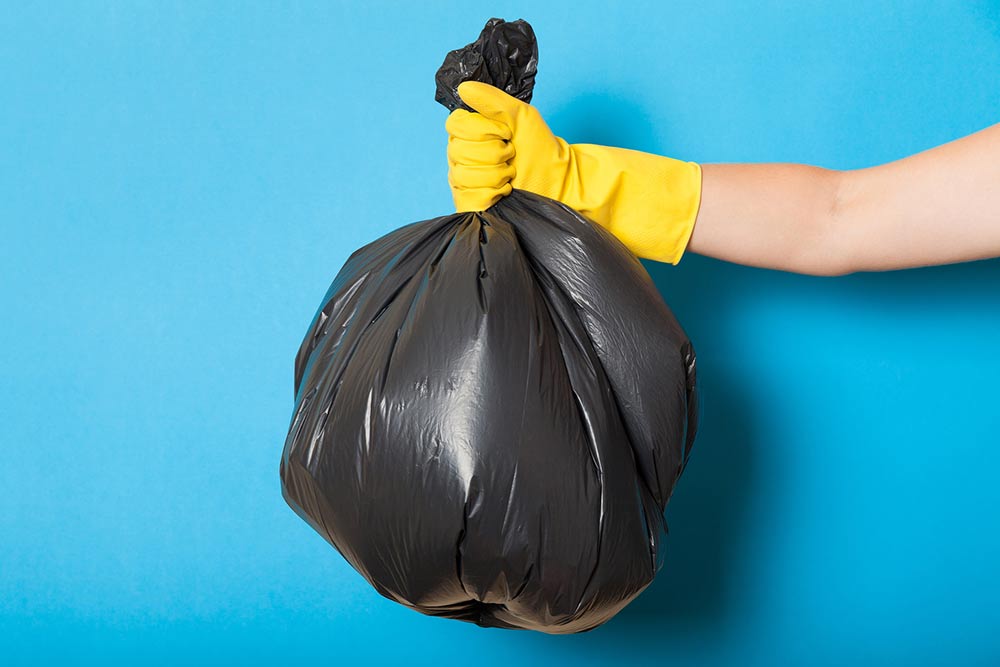7 effective ways to dispose of waste bags

Taking out trash is a chore that most people find mundane and unexciting. However, as simple as the task seems, managing trash can quickly get complicated if one does not know how to dispose of the waste bags properly. Also, the incorrect use of the waste bags can lead to garbage spillage, creating extra work. Therefore, to ensure that the task does not cause more stress, here are a few tips for effectively using and disposing of waste bags.
Check the size and shape of the waste bag
To begin the process, one must buy trash bags of the right shape and size. This will always ensure that the bags are used efficiently. While this may seem simple, many often purchase bags that barely fit in their trash cans. Sometimes, the bag is too small, and other times, it is too big. Using the wrong type of bag means ending up with a lot more mess to clean up later on.
One of the best ways to find the right waste bags is to consider the shape of the trash can. If the can is circular, rectangular, or square, it’s best to check the width of the bag that would fit perfectly inside the can.
After the shape of the can is determined, find out which size of the waste bag would fit it correctly. Most of the time, people pick bags that are of the same size as the trash can. But this would lead to a very snug fit. So always pick a bag that is slightly bigger than the trash can. Make sure that at least a couple of inches from the top of the bag can be folded around the rim of the can.
Opt for trash can with a grip
Sometimes, even if the waste bag is of the right size, it can still slip and not stay in place. This can happen if the weight of trash is too heavy or if someone does not dispose of the garbage properly. As a result, the garbage can end up at the bottom of the can instead of the bag, creating more mess and extra work. Therefore, to ensure effective usage of waste bags, one can use trash cans with grips in them. These grips can come in the form of rubberized textures or unique patterns at the bottom of the trash can, creating friction that helps the bag stay in place effectively.
Don’t let the waste bag slip off the trash can
Waste bags slipping off the edge of the trash can is a common problem. One of the obvious problems this creates is that the trash tends to get collected at the bottom of the can, making it difficult to empty and clean. Additionally, the waste bag becomes unusable and must be replaced before it is completely full, which can result in unnecessary extra costs. Therefore, for effective usage of the bag, it is essential to prevent it from slipping. One can opt for trash can accessories such as hooks and bands or use simple DIY methods like extra-large rubber bands, binder clips, and duct tape to secure the bag in place.
Check for holes and tears in the bag before and after using it
Sometimes, a waste bag may have holes or tears in it due to manufacturing defects or missed quality checks. Whatever the reason, using a damaged waste bag will make things worse when the trash starts to leak in time. The chances of this occurrence are high, especially when someone trashes liquids in the can. So always make sure to check the bag for holes and tears before placing it in the can. Sometimes, sharp objects such as pieces of glass or metal disposed of in the trash can damage the bag. To avoid such situations, using the double bagging technique is a good hack. Place one bag inside the other and place both in the can to give extra protection to the inner bag.
Seal the waste bag
Seal the waste bag when it’s time to take out the trash. Ties, adhesive tapes, and rubber bands can be used for this task. Just make sure the seal is not too tight as there can be chances of the waste damaging it. While sealing the bag, make sure that the contents don’t accidentally spill out. Also, keep them away from bugs and insects.
Look for biodegradable alternatives
Plastic waste bags are more common since they are affordable and easily available. But these are not easy to dispose of as they remain in landfills for years. So, try to look for more sustainable options such as biodegradable or compostable waste bags. These are easily recyclable and can be disposed of quickly without harming the environment.
Be aware of local regulations regarding trash disposal
Several communities have regulations for the disposal of trash and waste bags. It is often mandatory for residents to follow these guidelines; otherwise, they might be penalized. For example, some communities may not allow biodegradable waste bags but not plastic waste bags. So make sure to find out whether there are any local regulations for trash disposal, and if there are rules laid out, comply with them.


